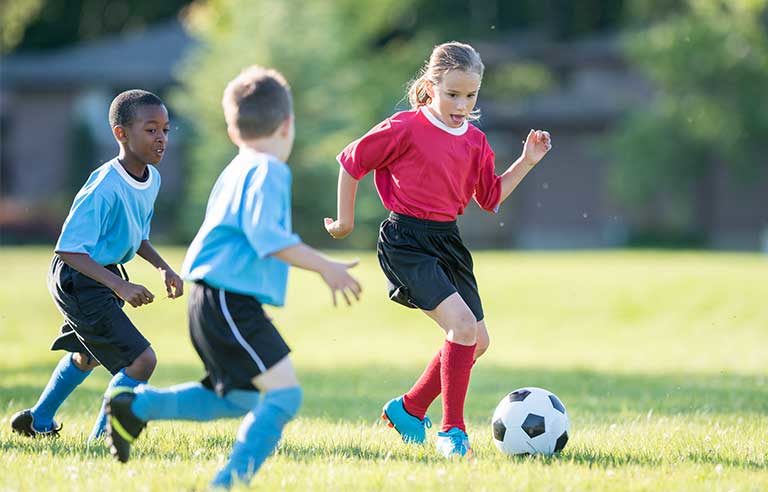Rate of head injuries up 1,600 percent among youth soccer players: study

Photo: Christopher Futcher/iStockphoto
Columbus, OH – More young people are playing soccer now than 25 years ago, and with that increase has come a rise in the number and rate of injuries among players, according to research from the Center for Injury Research and Policy of the Research Institute at Nationwide Children’s Hospital.
Researchers analyzed data from 1990 to 2014 from the National Electronic Injury Surveillance System. They found that an estimated 3 million children – about 120,000 per year – between the ages of 7 and 17 were treated in emergency rooms for injuries related to playing soccer. Each year, the number of injuries increased 78 percent and the injury rate per 10,000 athletes rose 111 percent, a press release from the hospital states.
The most common injuries were sprains and strains (35 percent), broken bones (23 percent) and soft-tissue injuries (22 percent). Concussions and other closed-head injuries accounted for only 7 percent – but the injury rate increased 1,596 percent over the 25 time span of the study. Researchers said the data does not provide a reason for why the spike in the concussion rate occurred, but they noted that young athletes with concussions or closed-head injuries were twice as likely to be admitted to a hospital.
“The sport of soccer has changed dramatically in the last 25 years,” Dr. Huiyun Xiang, senior study author and the center’s director of Research Core, said in the release. “We’re seeing athletes play year-round now thanks to club, travel and rec leagues, and the intensity of play is higher than it ever has been. These factors combine to lead to more risk of injury.”
To help reduce the prevalence of head injuries, researchers suggest children should be 11 or older before being allowed to “head” a soccer ball, and those 11 to 13 years old should follow limits on heading during practice.
Additional tips:
- Strengthen core and neck muscles, hips, and thighs before the season begins.
- Warm up before games.
- Wear the recommended protective gear, including shin guards and mouth guards.
The study was published in the September issue of the journal Pediatrics.
Post a comment to this article
Safety+Health welcomes comments that promote respectful dialogue. Please stay on topic. Comments that contain personal attacks, profanity or abusive language – or those aggressively promoting products or services – will be removed. We reserve the right to determine which comments violate our comment policy. (Anonymous comments are welcome; merely skip the “name” field in the comment box. An email address is required but will not be included with your comment.)

